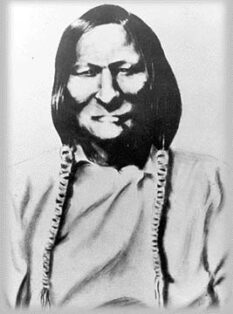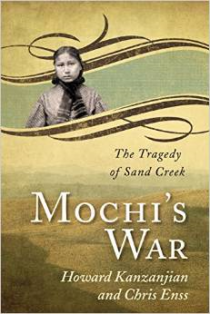Enter now to win a copy of
Mochi’s War: The Tragedy of Sand Creek

A Cheyenne storyteller sat cross-legged in front of an open fire in Black Kettle’s lodge near Cherry Creek, Colorado. Black Kettle and several warriors and elders were spread out across the room watching the smoke rise from the fire and disappear through a hole in the top of the tepee into the night sky. Mochi was with them, seated behind the old men listening to them talk and to the sounds beyond the lodge.
Black Kettle filled a pipe and lit it. He then pointed the pipe stem to the sky, then to the ground, and then to the four directions: north, south, east, and west. Before handing the pipe to the storyteller sitting on his left, he called upon the “Listeners-Above-the-Ground, Listeners-Under-the-Ground, and the Spirits Who Live in the Four Parts of the Earth.” After saying a prayer, the storyteller took the pipe from Black Kettle, smoked it, and began to talk. He told the story of what happened at Sand Creek, of the brave dead that lay under the cold, dark sky the evening after the massacre. He told about the white army that slaughtered women and children and of the blood spilled that would forever be remembered.
Tales generally told by the storyteller were his alone to share. Cheyenne history and sacred beliefs were kept alive by storytellers and could not be told by others. If the storyteller wanted he could give the story away in the same way he might give away a blanket or some other gift. Black Kettle’s lodge was filled with Indians who had no use for such a gift. They had their own stories about the Sand Creek Massacre. Tales of what they witnessed would be passed on by them from generation to generation. It would haunt their dreams and drive them, and their own stories of the horror would never cease.
Mochi, along with the others on hand to hear what the storyteller had to share, said nothing while he was speaking. It was believed that any noise or moving about while the sacred stories were being relayed would bring great misfortune upon the camp. When the ceremony ended Mochi walked out of the lodge with the others. For the time being her home was with her cousins. When she wasn’t helping with meals and caring for children she was learning the ways of the Dog Soldiers and preparing for more attacks on white settlers. Colonel Chivington’s attack on Sand Creek was meant to destroy the Indians’ will to fight, but it didn’t work. According to George Bent, who became a Dog Soldier after the massacre, many warriors refused to accept the United States government’s plan for the native people and banded together to retaliate.
A number of Cheyenne, including Black Kettle, refused to take up arms against the United States, however. They separated themselves from those braves who chose to stand their ground. Black Kettle didn’t want any more bloodshed. Bands of southern Arapaho, Kiowa, Comanche, and Cheyenne moved south of the Arkansas River, eventually making peace with the white man and signing a treaty promising to end the conflict.
Mochi didn’t agree with Black Kettle. She would become a warrior and stand against the U. S. government.

Mochi's War: Tragedy of Sand Creek
I'm looking forward to hearing from you! Please fill out this form and I will get in touch with you if you are the winner.
Join my email news list to enter the giveaway.
"*" indicates required fields

